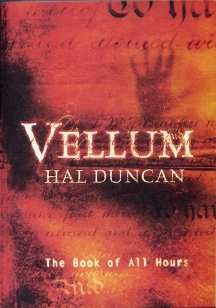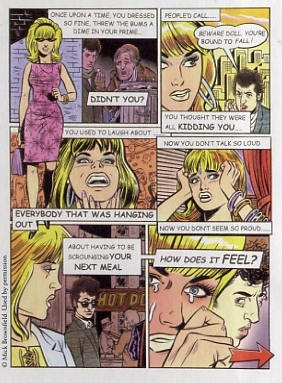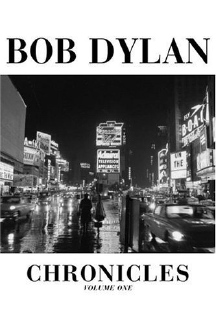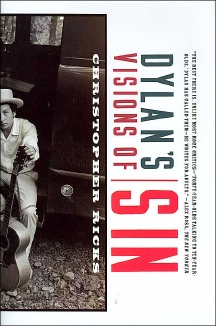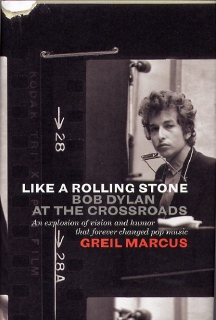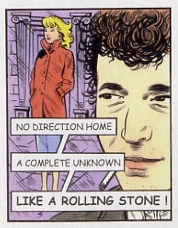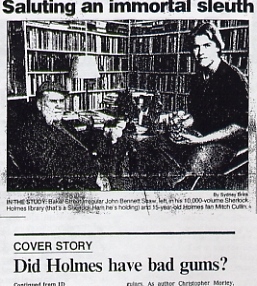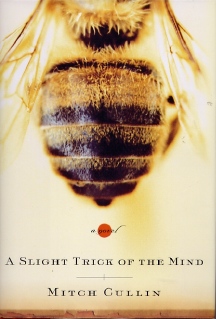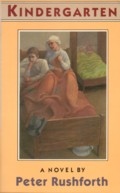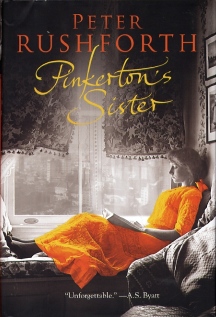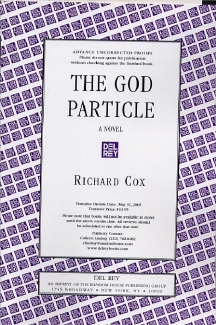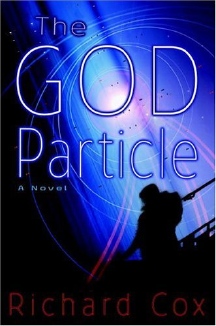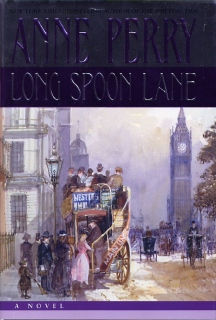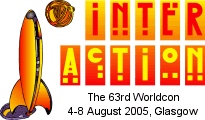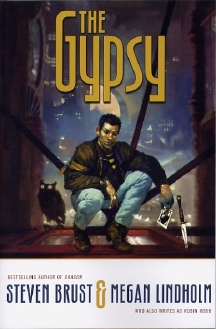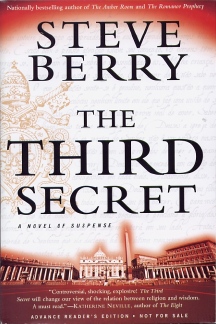|
|
|
This Just In...News from the Agony Column
|
04-01-05: Hal Duncan 'Vellum' |
|||
Folding
Up the Multiverse
From the get-go, it's clear that Pan Macmillan thinks a whole lot of this novel. The ARC is beautifully produced, with a matte cover, great art direction, intriguing back-cover copy and even a personal message from editor Peter Lavery. Lavery is one of the current geniuses of modern SF editing, and when he takes the time to introduce a novel, it's time to pay attention. The ARC even includes a statement of limitation -- 115 of 600. So we're talking something special here, but how special? I'm thinking 'Perdido Street Station' special, or perhaps 'Gridlinked' special, or even 'City of Saints and Madmen' special, all, not coincidentally, Pan Macmillan titles. 'Vellum' is no less than the first half of The Book of All Hours. But it's damn hard to nail down. That's because on one hand, we certainly have a solid science fiction underpinning. At some point in the novel, it's 2017, and nanotech-infested humans are preparing for war. They call themselves the unkin. But some of them have apparently become aware of the three-dimensional nature of time -- and that our perception of the world is but a scratch on what they call the Vellum. They've remade themselves in the name of ancient myths, and the war they're about to launch is going to destroy everything to save it. I know --from the blurbs and the publicity materials and even the author's own summaries out and about -- that these elements account for some part of the book. But then are the "images from the book" published by the author. But then there's the book itself, which is a very different kettle of fish. It's compulsively readable. You get a Lovecraft reference in the opening pages amidst entertaining student banter about the nature of reality and very arcane books. There's a dense, metafictional, literary feel to the writing, but it's also very transparent. Anyone who picks up this book and reads the first page or so will want to continue. Duncan leads the reader into what promises to be a very complex science fantasy via matter-of-fact fiction that feels as real as the novel in my hand. Though, I've got to admit, it doesn't feel all that real. Moreover, somewhere along the way, we get the Journals of Jack Carter from 1921, the Glasgow labor riots and Sumerian mythology. Along with that three-D map of time. All this and it's only the first half a longer work, 'The Book of All Hours'. We're expecting part 2 -- 'Ink' sometime in the following year. 'Vellum' in this form tops out at 528 pages -- enough to be hefty, but not so huge as to be unwieldy. I'd suggest right now that if youre a bookseller put in your order and double it; if youre a consumer, order two or three copies, preferably from a bookseller who carries signed copies. You know the usual suspects. If all goes well, and my intuition is that it will go incredibly well -- BSFA / Hugo award well -- Duncan has a series of other standalone novels he's thinking about setting amidst the many folds of time he's created in 'Vellum'. In the interim, we can count the days until August, and I'll ensure that I get a review up soon enough so that you can decide whether to get two copies -- or five. |
|
03-31-05: Greil Marcus 'Like A Rolling Stone' |
||||||||||||||
Bob
Dylan At The Crossroads
Here in the 21st century, we feel pretty safe looking back into history and writing about the young man who changed our perceptions, even as he writes about himself. There's been a bit of a cottage industry of books about Dylan recently. A search in any of the online services will return pages of new books about Dylan. The inception point was probably the incredibly dense and rather wonderful 'Positively Fourth Street' by David Hajdu. Now your mileage may vary, but I found the book to be one of those great non-fiction novels that totally sucked me and re-created for me a time when I was too young to be really cognizant of what was happening around me. Hajdu's work seemed pretty even-handed to me, neither fawning nor trashy. It certainly succeeded at re-creating the time shortly before Dylan went electric.
But readers looking for a straightforward examination of Dylan's life had best look elsewhere. Dylan's life is such a vast canvas -- and covers so much history -- that even Dylan can't condense it down into the literary version of a three -- or even a seven-minute single. While that's not surprising, it does leave one wanting something -- different. Perhaps a more interesting -- to this reader, at least -- approach is that taken by academic Christopher Ricks in 'Dylan's Visions of Sin'. In this 528-page tome, Ricks tries the organized approach to Dylan's work. Organized, but charmingly idiosyncratic. He analyzes the presence of the seven deadly sins, the four virtues and the three graces in Dylan's work. The result is a dense poetic analysis of Dylan's poetry on a level never before attempted. There are some real rewards here, but by focusing on the literary side of Dylan's music, the reader loses the life and the music that accompany the lyrics. Of course, I'm very interested in visions of sin, no matter whose they may be, so this book has a great appeal to me. But the book that seems like the perfect follow up -- for me -- to Hajdu's work is Greil Marcus' 'Like A Rolling Stone: Bob Dylan At the Crossroads' (Public Affairs / Perseus Book Group ; March 29, 2005 ; $25.00). Marcus has been friends with Dylan since the Joan Baez days chronicled in Hajdu's book, and he's written about Dylan before in 'Invisible Republic'. But in 'Like a Rolling Stone', Marcus does no less -- and much more -- than document the creation of a single, iconic song, a song that is as relevant today as it was forty years ago.
The chapter titles give an indication of where Marcus goes with this; 'The Day Kennedy was Shot', 'Top 40 Nation', 'Democracy in America', 'Swinging London', to name but a few. By keeping his focus tight, Marcus is able to paradoxically cover a wider ground, with more details, more leeway, more wild howls. He injects himself into the narrative, his passion and vision overlaid on his story of Dylan's passion and vision. It's a complex creation with a simple premise. Which is of course what the song itself is; which is why this is a book about a song that's worth reading. Which is why Steve Erickson recommended it to me, and I was ecstatic to see it arrive. More passion. More focus. Greil Marcus is going to tell us a story. Once upon a time.... |
||||||||||||||
|
03-30-05: Mitch Cullin, 'A Slight Trick of the Mind'; Peter Rushforth's 'Pinkerton's Sister'; Richard Cox Investigates 'The God Particle' |
||||||
Post
Hiroshima Holmes
There must have been something in the air say, some what -- two, three years ago? You've got to keep the publishing lag in mind when making presumptions about the origins of novels, since what we're seeing this month was created long ago. But whatever it was, it must have been quite powerful. Otherwise, how to explain yet another super-desirable, super-literary novel featuring an aging Sherlock Holmes? In Mitch Cullin's 'A Slight Trick of the Mind' (Nan A. Talese / Doubleday / Random House ; March 19, 2005 ; $23.95), we meet Sherlock Holmes at the age of 93, shortly after the end of World War Two -- and Michael Chabon's exquisite, literary gem, 'The Final Solution'. Cullin brings his own unique background to this novel, and it's fascinating in itself. In 1984, USA Today ran a piece on the cover of their arts section about the ever-popular character. Featured in the piece was then 15-year old Mitch Cullin, who had discovered Holmes like me, by watching Basil Rathbone movies on television. By that time, he'd already written what the article describes as "an epic screenplay of Holmes' life". It most certainly wasn't the last thing he'd write about Holmes. But it would take him a while to get back to the iconic character. In the interim, he's addressed adolescent angst in 'Whompyjawed', written academic satire in 'The Cosmology of Bing', collaborated with collage artist Peter I. Chang in 'UnderSurface', written a detective novel in verse titled 'Branches' and tackled Texas teenagers in 'Tideland'. 'Tideland' was recently adapted to film by Terry Gilliam, a sure indicator that this is a writer of interest to my readers, no matter what their chosen genre.
Cullin brings years of Holmesian interest and a quiet, powerful prose style to this novel. In it, he undertakes the daunting task of humanizing Holmes, which is, of course, no easy task. But he does so by unmanning him, by subtly, slowly severing Holmes from the faculties that gave him such power as a character. It's a fascinating experiment with an impeccable pedigree, and yet another reminder that derivative fiction may indeed claim the high ground. If you're lucky enough to live in Northern California, you'll have a chance to catch the author at both M for Mystery (May 22, 2005) and The Capitola Book Café (May 23, 2005) being interviewed by no less than bestselling Holmes-writer Laurie R. King ('The Game'). In Southern California, he's appearing with Nicholas Meyer, Ricky Jay and moderator Patt Morrison at the Los Angeles Times Book Festival on April 23, 2005. He's also appearing at Vroman's Bookstore on April 27, 2005 with Sherlockian Scholar Jerry Kegley. Mark your calendars now. |
||||||
Macadam
Cage's Follow Up to A Perfect Novel
So, a bit of history is in order. Here it is, 1979, and Peter Rushforth's first novel, 'Kindergarten' is released. It's the story of how a terrorist event triggers the excavation of events in a two children's lives that lead them back to an understanding of the Holocaust, via a particularly horrific version of the Hansel and Gretel myth. Given the acclaim this current novel is receiving, one might nab a hardcover first edition of this first novel. I expected stratospheric pricing but was pleasantly surprised to find first hardcovers topping out at $17.00. Of course it's kind of slim pickings; many of those available are ex-library books, price-clipped, remaindered or have bookplates. Oh those pernicious bookplates that have ruined many a great find.
Of course, here at The Agony Column, an enormous chunk of surreal is precisely what we like to see. Set in turn-of-the-last-century New York, 'Pinkerton's Sister' is the story of Alice Pinkerton, madwoman. But she's not mad. She's just very, very strange. Of course in those days, and even now, really, really strange is enough to get you a good lineup of meds that will turn your brain into guava jelly. That's not happened to Alice, not yet. Her mind is razor sharp, honed by years of reading and contempt for her surroundings. So, yes, she not only sounds like a character Agony Column readers might want to read about, she sounds like an Agony Column reader herself. In her mind, the works of Shakespeare, Oscar Wilde, Robert Louis Stevenson, and Edgar Allen Poe are as real as the world around her. Her companions are Lady Macbeth, Jane Eyre, Maggie Tulliver and Jo March. Yes, this might sound like people you know. It might even sound like someone you are. As Alice moves through her world, she transports the real people she encounters back into the world of literature she knows so well, where their real characters can emerge, where the work can take them to the fates they deserve. This does not endear her to those around her, but it does lead to some wonderfully hallucinatory prose, and some fantastic evocations of the literary. One can see why Macadam Cage is the perfect, the quintessential publisher to release this novel. It combines the literary and the surreal, genre fiction tools and tropes with a focus on real characters. Well, as real as possible from the point-of-view of a woman generally considered mad. For those of us who are generally considered mad, why this is a perfect opportunity to lose ourselves in a very congenial mental illness. Is too much reading a form of insanity? Of course it is. Is it the only sane response to a world even madder than a world of Red Queens and hatters? Yes. The only sane response. But do try to back away from the Lady Macbeth hand washing antics. You may find it impacts the quantity and quality of party invitations you receive. But who wants to attend parties when there are perfect novels to be read? |
||||||
Beyond the Higgs Boson
What do you get when you go beyond the Higgs Boson, the so-called God Particle that holds the universe together? You get a non-stop chase thriller, that's what, at least when Richard Cox is writing 'The God Particle' (Del Rey /Random House ; May 31, 2005 ; $13.95). Cox's first novel was 'Rift', a peculiar combination of present-day science fiction and non-stop action. It involved a teleported man -- as opposed to Philip K. Dick's 'The Unteleported Man', but given that teleportation played a major role in the narrative, it involved an awful lot of well-choreographed action. 'The God Particle' begins as Steve Keeley falls and does not injure his brain. Nope, he comes out of the accident able to see what's going to happen before it happens. He comes out of the accident convinced he can do impossible things. We should all be so lucky. And were we to be so lucky, we should all want to meet Mike McNair, who just happens to be working on a project to find the Higgs Boson, the Elmer's Glue-All of the universe. Keeley and McNair find themselves involved with LSD variants and pursued by forces darker than one might think. Were Cox to confine himself solely to running about and hand-waving physics, our interest might not be so piqued, but once you bring in LSD variants, all of a sudden we're pricking our ears. It's a bit early yet to tell where this book comes down and how, but it's certainly worth keeping an eye on. One of my favorite writers, John Shirley, has created his own version of the God particle -- the IAMton, responsible for our ability to perceive, and it's served him very well. If Richard Cox has found his own version -- the thrillertron, that essential bit of science fiction invention that holds together a good page-turner -- then we may have a new entry in the period table of contents for books worth reading. |
||||||
|
03-28-05: Hugo Shortlist, The Gypsy by Steven Brust and Megan Lindholm; Steve Berry 'The Third Secret' |
|||
Country of the Mind
OK, so what do you think? I have to say that this is a very strong list, the strongest I've seen since I' been following these awards. I've read and reviewed all of the novel candidates; in fact I've interviewed most of the authors. The coincidence screams out at you; China Miéville's 'Iron Council' and 'Iron Sunrise' Charles Stross. And the non-coincidence screams out at you as well. Every selection in this UK-based convention has a UK author. Well no wonder I like -- no love -- this ballot. 'The Algebraist' by Iain M. Banks, 'River of Gods' by Ian McDonald, Susanna Clarke's 'Jonathan Strange & Mr Norrell' -- these are all fantastic novels. As a voter, I'm going to have very hard time picking the winner. The rest of the ballot presents some fascinating writers. I'm glad to see that Stross -- and publisher Golden Gryphon -- are getting recognition for 'The Concrete Jungle', his Lovecraft / Deighton-inspired novella from 'The Atrocity Archives'. Bradley Denton's 'Sergean Chip' made the grade, as did Tachyon Publications 'The Best of Xero'. Elizabeth Bear ('Hammered'), K. J. Bishop ('The Etched City') and Steph Swainston ('The Year of Our War') are all up for and quite deserving of The John W. Campbell Award. I've noted in past writings the local effect of the Hugo Awards. This is to say that authors who reside in the country where the event is being held have a natural advantage because those attending and voting will tend to vote for local authors. Now this effect is diluted by a number of factors, but it is undeniable, and one can especially see it at work if one looks at the numbers of votes cast in each category. It's pretty small, really -- smaller than I would have thought, observing the process from the outside. Not that I see myself as inside now. But I am inside enough to go to the website and look at the total votes cast. The Best Novel category got the most votes, 424 nominating ballots. And the country that dominated those awards was the UK, where the event is being held. But the interesting total is the second highest -- those 311 disembodied souls voting for Best Web Site, special Hugo chosen by the Interaction Committee as allowed by the Hugo bylaws. And that, too demonstrates the local effect, one would suspect, because most of the votes were being cast on the Internet. As with the novels, the nominees are all undisutably deserving; SciFiction, Emerald City, Strange Horizons and eFanzines. There are a lot of readers for these electronic publishers, and no matter where they live they all live in same country. The largest country being spoken for was not a "real" country at all, but the Internet -- the country of the mind. |
|||
Music, Folk Tales and Mean Streets
Apparently, 'The Gypsy' first began life as a song cycle by writer and musician Adam Stemple. Stemple, the son of fantasy icon Jane Yolen, is quite prolific, pumping out music and prose at a rapid pace. His website contains links to his prose blog, 'The Ink Blot' and to his current band, The Tim Malloys. As if that's not enough, he also keeps a poker blog, and I frankly dont see how he has enough time to eat or sleep given his other activities. In point of fact, I can easily imagine that one could spend much of one's life simply trying to keep up with Stemple's output; actually putting it out approaches the mind-boggling level. By the time you read this, he'll have just finished up at Minicon, and he's planning on attending BEA, ALA, and Convergence before attending Worldcon. Amazing. Follow the link to his website at your own peril. I'm going to grab the steering wheel and drag this article back to the book that launched it. Given all the musicianship involved -- Brust has his own band, Cats Laughing -- it will come as no surprise the 'The Gypsy' has a distinctly musical feel to it. Music permeates the text and the writing. But the hard-boiled police procedural feel will come as a bit of shock for those expecting the kind of fantasy usually associated with the name Robin Hobb. Set in Lakota, Ohio, 'The Gypsy' begins with Cigany wandering the streets, without memory, without background. When he becomes involved in the murder of a store clerk, cop Mike Stepovich arrests him, but is quickly convinced that Cigany is not responsible. The novel unfolds in a series of street-based folk tales -- 'What The Badger Said To The Raven', 'The Wolf And The Spider'-- as Stepovich and Cigany find themselves on mean streets populated by The Queen of the Underworld and her not-so-human cohorts. People are not what they appear to be, and the streets prove to be a good deal meaner than one might first suspect. It looks like a pretty entertaining diversion, to tell the truth, the sort of thing you can flip through in a weekend while the kids approach you and demand money. And given that its a trade paperback reprint, you might have some money left over to give them. Just make sure that they're not handing it over to any gypsies or queens of the underworld. And if they're attending a concert by the Tim Malloys, maybe they can catch up on Adam Stemple's music while you catch up on your reading. |
|||
Fatima Calling
For readers who want something closer to home, Randall Sullivan's 'The Miracle Detective' offers a powerful and compelling first-hand examination of the events at Medjugorje. Sullivan was a Rolling Stone reporter who found himself caught up in a war-torn landscape that seemed to be giving birth to miracles. It was a gripping work of investigative Fortean journalism on the order of John Keel's 'The Mothman Prophecies', and Sullivan himself was a formidable presence. But for all the non-fiction about such matters, there's not been a lot of fictional work to accompany it. That's about to change, with the forthcoming novel by Steve Berry, 'The Third Secret' (Ballantine Books / Random House ; June, 2005 ; $24.95). OK, hands up if you know about the three secrets of Fatima. What, no takers? In 1917, three young girls saw a vision of the Blessed Virgin Mary near the town of Fatima, in Portugal. Eventually thousands of people were present and saw something that gets reported in UFO books as often as in religious texts. The BVM appeared six times to the girls and told them three secrets. Well, the first two were revealed shortly after the sightings and concerned a vision of hell and the conversion of Russia. The third secret was not revealed until the year 2000, and was, to say the least, a bit on the obscure side. Moreover, the Sister Lucia, the Fatima seer who wrote the secret made no comment on what was revealed. There's been quite a bit of theorizing along the lines of "We ain't heard it all". Which is where 'The Third Secret' begins. Father Colin Michener is a secretary to Pope Clement XV in the near future. The Pope spends a lot of time in his private archives, poking about the secrets of Fatima. When he sends Michener on a mission to the Romanian highlands, the priest trips over murders and suicides. You can bet they tie back to the titular secret, and that it's an earth-shaker. It's no secret that books about the Catholic Church get more than a little goose on the bestseller charts. From 'The Exorcist' to That Book, we all love a good Catholic conspiracy theory. Or if we don't love 'em, at least a lot of folks out there buy 'em. Hey, even science fiction writer Steven Baxter has a bash at it in his science fiction novel 'Convergence'. So with one eye on the plot and another eye on the profit, expect Random House to inundate booksellers and readers with tours, promotions, sample chapters, standees, risers, and websites, to accompany the release of 'The Third Secret'. This ARC includes a Q&A, author's notes, and more goodies that may or may not make their way into the hardcover version. It might once have been a secret, but if Random House has their way, it certainly wont be one for much longer. |
